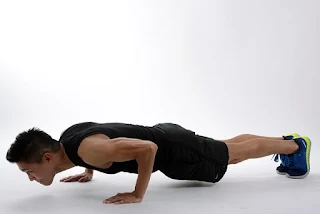Introduction
Being an athlete means constantly striving to improve your performance, whether you’re playing in competitive sports or simply enjoying your favorite activities. To reach your full potential, it’s essential to follow a well-rounded fitness training routine. This routine not only helps you become stronger and faster but also keeps you healthy and reduces your risk of injuries.
In this blog post, we’ll explore various fitness training routines designed specifically for athletes. These routines include warm-up exercises, strength training, cardiovascular workouts, plyometric exercises, core training, and recovery techniques. Each section will provide simple, easy-to-understand explanations and tips so that athletes of all ages and skill levels can benefit.
Whether you’re a high school athlete looking to join the varsity team, a weekend warrior aiming to improve their game, or someone who simply wants to stay fit and active, these training routines will help you achieve your goals. By incorporating these exercises into your regular workout schedule, you will notice improvements in your strength, speed, endurance, and overall athletic performance.
So, let’s look at the essential fitness training routines that can help you become a better athlete and reach new heights in your athletic journey.
Warm-Up and Stretching
Warming up is the first and most important step before any workout. It helps your muscles get ready for exercise, increases blood flow and prevents injuries. Here are some easy warm-up exercises:
- High Knees: Run in place while lifting your knees as high as you can. This gets your heart pumping and warms up your legs.
- Butt Kicks: Run in place while bringing your heels toward your butt. This helps stretch your thighs.
- Leg Swings: Swing your legs back and forth and side to side. This loosens up your hips and legs.
After warming up, stretching is important to improve flexibility and prevent injuries. Focus on stretching all major muscle groups like your legs, arms and back.
Strength Training
- Squats: Stand with your feet shoulder-width apart, lower your body as if you were sitting in a chair, then stand back up. This strengthens your legs and hips.
- Deadlifts: Lift a weight from the ground to your hips while keeping your back straight. This exercise works many muscles in your body.
- Bench press: Lie on a bench and press the weight up above your chest. This strengthens your chest, shoulders, and arms.
- Pull-ups: Hang from a bar and pull your body up until your chin is above the bar. This strengthens your back and arms.
Cardiovascular Training
- Running: Great for building endurance and heart health. You can run outside or on a treadmill.
- Cycling: Strengthens your legs and improves heart health. You can cycle outside or use a stationary bike.
- Swimming: A full-body workout that's easy on your joints and improves lung capacity.
- HIIT (high-intensity interval training): Combines short bursts of intense exercise with rest periods. This type of workout burns a lot of calories and improves endurance quickly.
Plyometrics
- Box jumps: Jump onto a sturdy box or bench and then jump back down. This builds strength and explosiveness in your legs.
- Burpees: Start by standing, squat, jump your feet back into a plank position, do a push-up, return to a squat position and jump up. This is a whole-body exercise that improves fitness and power.
- Lateral jumps: Jump from side to side over an object or line. This improves your agility and coordination.
Core Training
- Plank: Hold a push-up position while keeping your body straight. This strengthens your entire core.
- Russian Twist: Sit on the ground, lean back slightly, lift your legs off the ground, and twist your torso from side to side. This works your oblique muscles.
- Leg Raise: Lie on your back, lift your legs straight up, and then lower them back down without letting them touch the ground. This targets your lower abdominal muscles.
Recovery and Rest
- Rest days: Take at least one or two days off each week to allow your body to recover.
- Foam rolling: Roll a foam roller over your muscles to relieve muscle tightness and improve blood flow.
- Massage therapy: Get regular massages to reduce muscle pain and promote relaxation.
- Hydration and nutrition: Drink plenty of water and eat a balanced diet rich in protein, carbohydrates, and healthy fats to give your body energy and aid recovery.
Conclusion
By following these fitness training routines, you can improve your athletic performance, stay healthy, and avoid injuries. Remember, consistency and dedication are key to achieving your fitness goals. Stay committed, listen to your body, and make adjustments as needed to ensure continued progress. Keep pushing yourself, and you will see amazing results!




.jpg)


.jpg)

.jpg)











Valuable
ReplyDeleteHnn Thank you ba
Delete